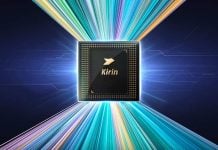Huawei recently introduced NearLink, its latest generation of short-range wireless connection technology. Short-range communications are wireless technologies that allow devices to connect to each other over a short distance. One of the most common examples of short-range communication is Bluetooth. But Huawei’s new NearLink technology is claimed to be significantly faster than Bluetooth. And it has the potential to be used as a standard connection technology for future devices.
This is a significant achievement for Huawei, as it has been blacklisted by the US government. However, Huawei remains a major player in the global tech industry, and NearLink is a sign that the company is still innovating despite its challenges.
Huawei’s NearLink could be a game changer
NearLink is the result of a collaborative effort between more than 300 leading enterprises and institutions from around the world. It combines the strengths of traditional wireless technologies like Bluetooth and Wi-Fi, resulting in a much faster, more reliable, and more energy-efficient connection.

NearLink is six times faster than Bluetooth and has a latency of just 1/30th of a millisecond. This makes it ideal for applications that require high-speed data transfer and low latency, such as augmented reality and virtual reality. NearLink also supports up to 10 times more group connections than Bluetooth, making it well-suited for multi-device applications like smart home systems and industrial automation. Also, energy consumption has decreased by up to 60%.
Huawei says NearLink can be used in a variety of scenarios, including consumer electronics, smart homes, electric vehicles, and industrial smart manufacturing.
But Huawei is not the only company working on new short-range wireless connection technologies. Apple has its own technology called Ultra Wideband (UWB). Other companies, such as Qualcomm and MediaTek are also involved in the development of this field. However, NearLink appears to be an advanced short-range wireless connection technology that has the potential to become the standard for future devices.
Related:
- Huawei MateBook 14 2023 32GB version is now available for purchase
- Huawei Luxeed Spy Shots Reveal Sedan’s Unique Design and Lidar for Autonomous Driving
- Huawei Watch 4 Pro users can now play games with HarmonyOS 4 update, beta testing begins
- These Huawei phones and tablets are eligible for HarmonyOS 4 beta update






